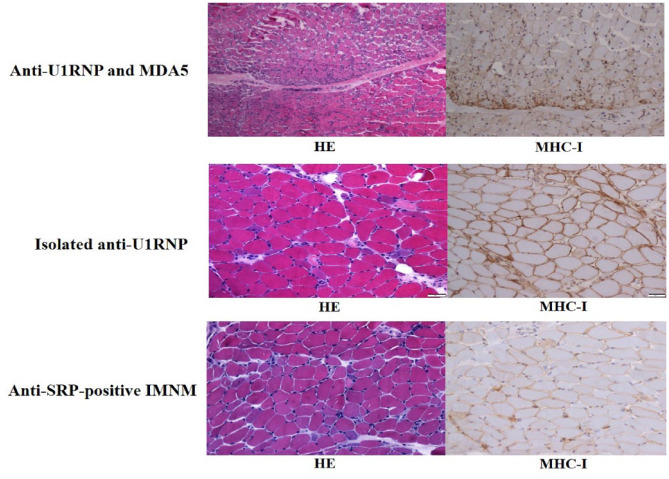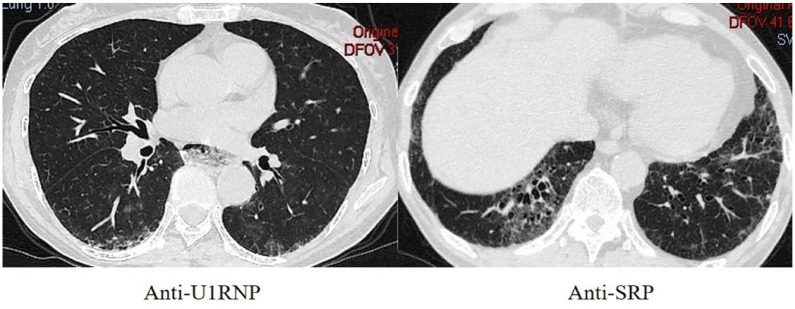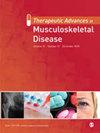Clinical characteristics of myositis patients with isolated anti-U1 ribonucleoprotein antibody resemble immune-mediated necrotizing myopathy.
IF 3.4
2区 医学
Q2 RHEUMATOLOGY
引用次数: 0
Abstract
Background: Anti-U1 ribonucleoprotein (U1RNP) antibodies were associated with connective tissue diseases (CTDs), but the clinical characteristics of this antibody in Chinese myositis patients have not been studied. Objective: We aim to analyze the clinical features of myositis patients who test positive for anti-U1RNP antibodies and delineate a subgroup of myositis. Design: This is a retrospective cohort study. Methods: We reviewed the clinical data of myositis patients with anti-U1RNP antibodies and compared them to those with anti-signal recognition particle (SRP) and hydroxy-3-methylglutaryl-CoA reductase (HMGCR) antibody-associated immune-mediated necrotizing myopathy (IMNM). Results: A total of 30 adult cases were identified; median age was 47.5 years and 24 (80%) were females, and 12 patients did not coexist with myositis-specific antibodies (MSAs) (isolated anti-U1RNP). The serum creatine kinase (CK) was significantly higher in patients with isolated anti-U1RNP (2182.5 U/L versus 289 U/L, p = 0.01), and the number of patients with CK > 2000 U/L was higher compared to that in anti-U1RNP antibody patients coexisting with MSAs (66.7% versus 16.7%, p = 0.009). The prevalence of IMNM in patients’ muscle pathology with isolated anti-U1RNP was significantly higher (75%, p = 0.003). Skin rashes were less common in isolated anti-U1RNP group (p < 0.05). Of the 25 individuals with available pulmonary high-resolution CT (HRCT), 14 (56%) were diagnosed with interstitial lung disease (ILD). The incidence of muscular weakness, dysphagia, or levels of CK was not different between the isolated anti-U1RNP antibody individuals and the anti-HMGCR or SRP-IMNM groups (p > 0.05). But the frequency of Raynaud’s phenomenon, arthritis, and membrane attack complex (MAC) deposits in myositis patients with isolated anti-U1RNP antibodies were higher than in anti-HMGCR and SRP-IMNM (all p < 0.005). There was no difference between anti-U1RNP patients with and without Ro-52 (p > 0.05). Isolated anti-U1RNP individuals showed marked improvements in muscle strength, and the remission rate in 1 and 2 years was significantly higher than that in anti-HMGCR and SRP-IMNM (p < 0.05). Conclusions: The clinical and pathological features of myositis patients with isolated anti-U1RNP antibodies were similar to IMNM. Arthritis and ILD are the most common extramuscular clinical features. Most respond well to treatment and have a good prognosis.



分离抗u1核糖核蛋白抗体肌炎患者的临床特征与免疫介导的坏死性肌病相似。
背景:抗u1核糖核蛋白(U1RNP)抗体与结缔组织疾病(CTDs)相关,但该抗体在中国肌炎患者中的临床特征尚未研究。目的:分析抗u1rnp抗体阳性的肌炎患者的临床特征,并划分肌炎亚群。设计:这是一项回顾性队列研究。方法:回顾具有抗u1rnp抗体的肌炎患者的临床资料,并将其与抗信号识别颗粒(SRP)和羟-3-甲基戊二酰辅酶a还原酶(HMGCR)抗体相关免疫介导的坏死性肌病(IMNM)患者进行比较。结果:共鉴定成人病例30例;中位年龄47.5岁,女性24例(80%),12例患者未同时存在肌炎特异性抗体(msa)(分离抗u1rnp)。血清肌酸激酶(CK)在分离抗u1rnp患者中显著升高(2182.5 U/L比289 U/L, p = 0.01),且CK > 2000 U/L的患者数量高于抗u1rnp合并msa患者(66.7%比16.7%,p = 0.009)。分离抗u1rnp患者的肌肉病理中IMNM的患病率明显较高(75%,p = 0.003)。单独抗u1rnp组皮疹发生率较对照组低(p > 0.05)。但分离抗u1rnp的肌炎患者发生雷诺现象、关节炎和膜攻击复合体(MAC)沉积的频率高于抗hmgcr和SRP-IMNM患者(p > 0.05)。分离抗u1rnp个体肌力明显改善,1年和2年缓解率明显高于抗hmgcr和SRP-IMNM组(p)。结论:分离抗u1rnp抗体肌炎患者的临床和病理特征与IMNM相似。关节炎和ILD是最常见的肌外临床特征。大多数对治疗反应良好,预后良好。
本文章由计算机程序翻译,如有差异,请以英文原文为准。
求助全文
约1分钟内获得全文
求助全文
来源期刊

Therapeutic Advances in Musculoskeletal Disease
Medicine-Rheumatology
CiteScore
6.80
自引率
4.80%
发文量
132
审稿时长
18 weeks
期刊介绍:
Therapeutic Advances in Musculoskeletal Disease delivers the highest quality peer-reviewed articles, reviews, and scholarly comment on pioneering efforts and innovative studies across all areas of musculoskeletal disease.
 求助内容:
求助内容: 应助结果提醒方式:
应助结果提醒方式:


